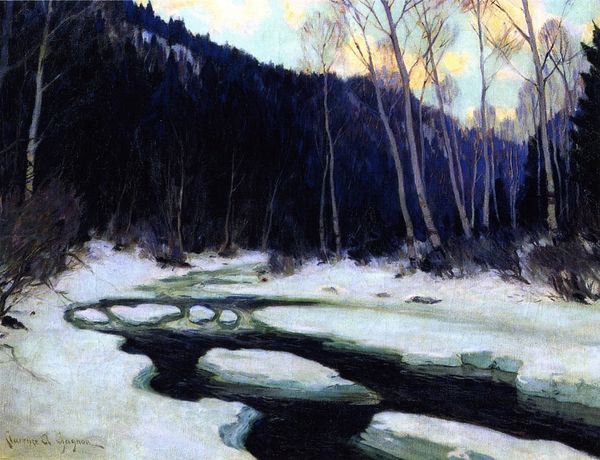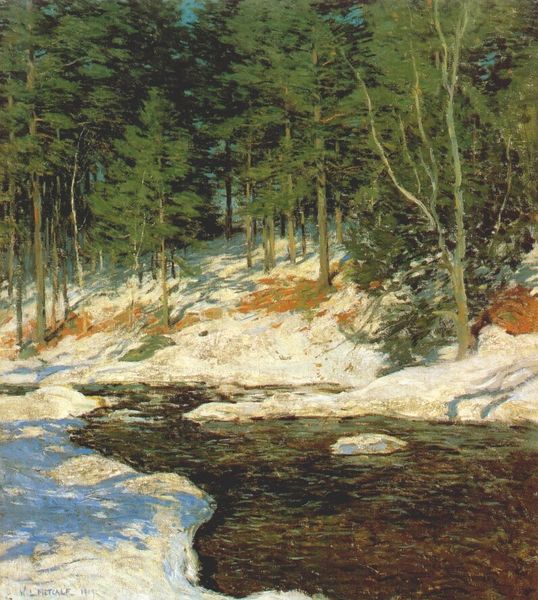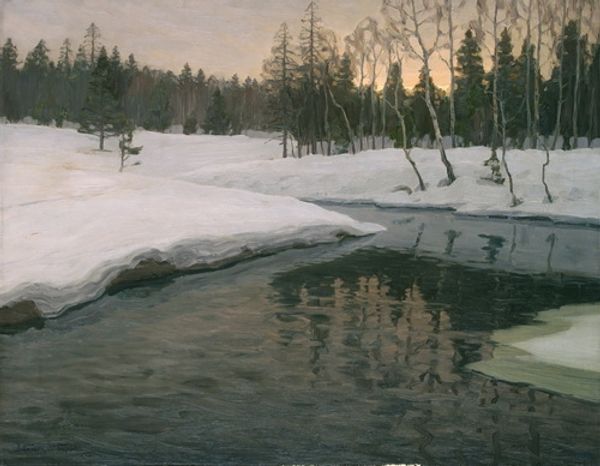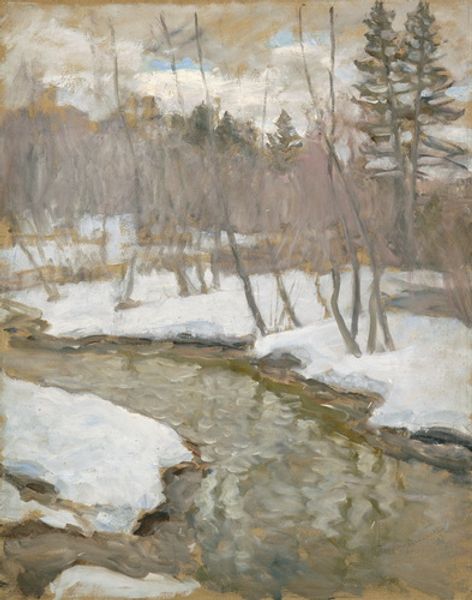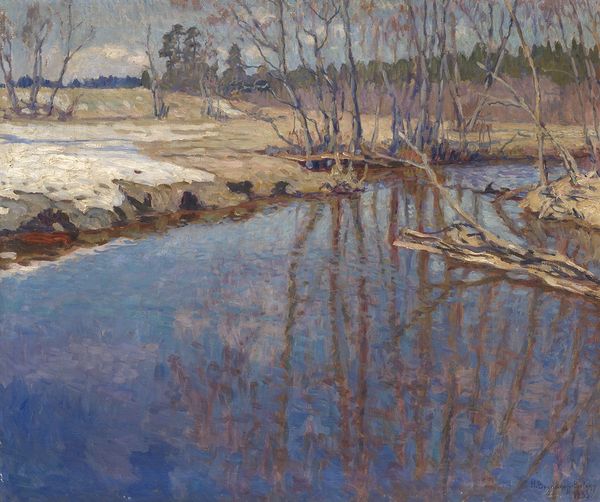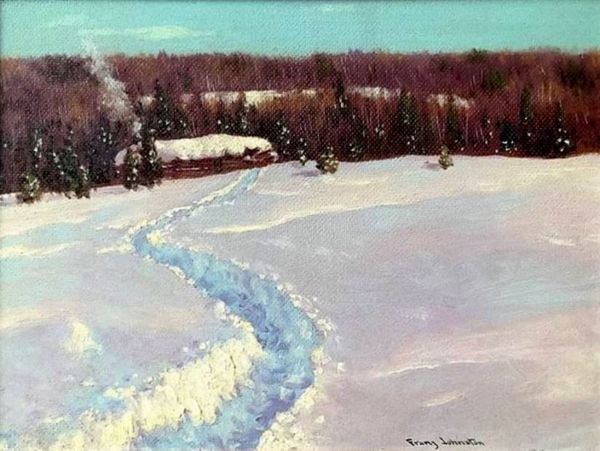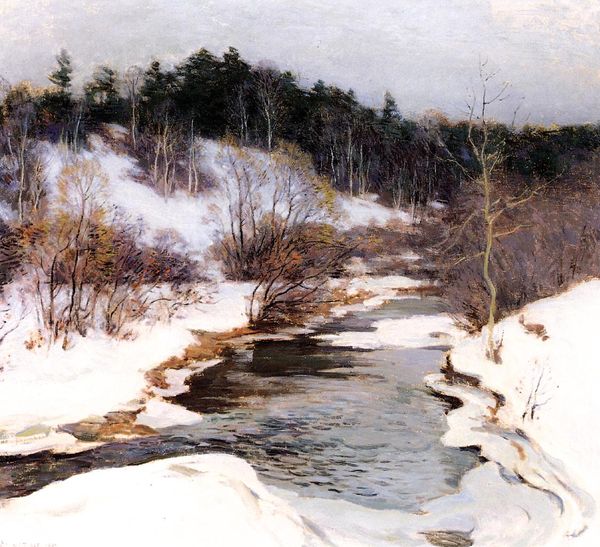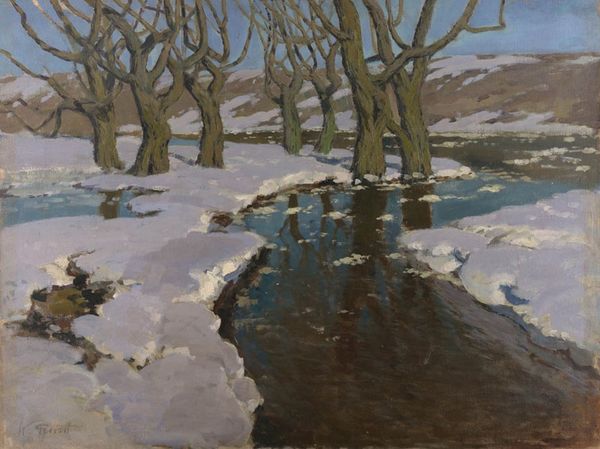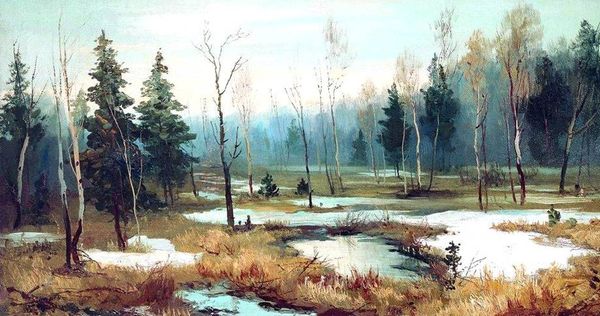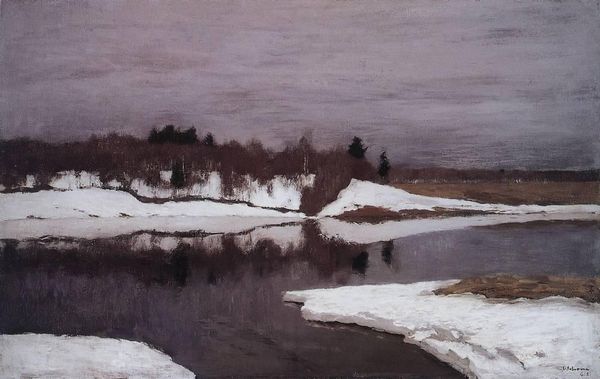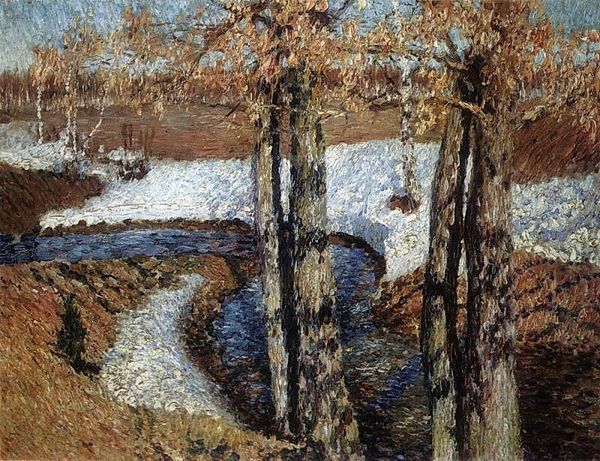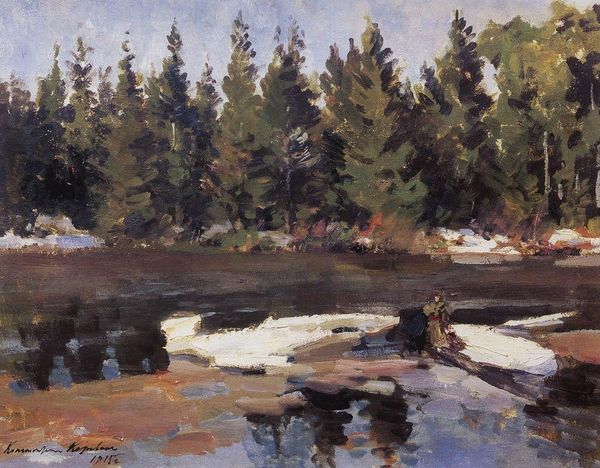
Dimensions: 49 x 51 cm
Copyright: Public domain
Editor: Here we have Isaac Levitan’s "Springtime. The Last Snow," painted in 1895. It’s a lovely, melancholic scene of a thawing landscape. The contrast between the cool blues of the water and the warm browns of the earth is striking. What draws your attention in this piece? Curator: Levitan masterfully captures a specific moment in the Russian landscape, imbued with complex political significance. Notice how the 'last snow' isn't just a meteorological detail. Think about what the passing of winter meant in the context of late 19th century Russia, a time of immense social and political change, with rising populist sentiments. Editor: So you're saying the melting snow can symbolize more than just a season changing? Curator: Exactly. Consider the rise of landscape painting as a genre, particularly in Russia. It wasn't merely about depicting pretty scenery. It was about forging a national identity. How did the artists contribute to forming Russian identity through their art? Levitan, though Jewish, contributed significantly. Does that strike you as somehow contradictory or noteworthy? Editor: It does raise questions about who gets to define national identity through art. So, his perspective as an outsider might actually add another layer to the work. Curator: Precisely! This adds weight to the reading that it is more than just a scene, or a nationalistic portrayal, but also speaks to themes of marginalization and acceptance through his own experience within the Russian context. So his landscape may contain more nuanced political commentary than you see at first glance. Editor: That’s really interesting, I wouldn’t have considered how the cultural context influenced the work so deeply. Thanks for pointing that out! Curator: And thank you for your astute observations on the initial appearance of the scene! Hopefully this sheds new light on what is ultimately more than a simple painting.
Comments
No comments
Be the first to comment and join the conversation on the ultimate creative platform.

